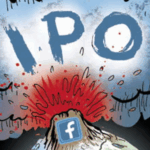 Some publishers are raking in the traffic courtesy of Apple News, but not everyone on the buy side is impressed.
Some publishers are raking in the traffic courtesy of Apple News, but not everyone on the buy side is impressed.
“I want to be able to upload my own audience, match it to theirs and know what’s running where so I can customize the ad,” said Angelina Eng, VP of media platforms and operations at digital agency Merkle. “I’d rather use my clients’ money to test something I can sink my teeth into.”
Apple isn’t offering much in the way of targeting. Its trove of registration data will stay under lock and key, and NBCUniversal, which just partnered with Apple to rep ad inventory in Apple News, won’t be able to sweeten the deals it cuts with publisher-specific data, either. Advertisers will be able to target by content category, like lifestyle, sports or business, but not by specific publisher.
Those targeting parameters are less than what a print publisher could provide and quite antithetical to where the industry is going, with data at the heart of every digital buy.
“At Merkle, we want to get away from generic messages and general segmentation,” Eng said.
Pros And Cons
But that’s not to say there isn’t value for publishers. For one, Apple News is brand safety personified.
“It’s free of ad blocking, it’s brand-safe and there’s the chance for high viewability,” said Jennifer Lum, chief strategy officer and co-founder of mobile DSP Adelphic. “But one of the most compelling things about the product is that Apple provides a way to help promote content without requiring users to unlock their phone. All users have to do in order to access content is to swipe right. It’s a huge win for publishers in terms of discovery and traffic driving.”
As part of the iOS 10 update, the Apple News widget is featured on the lock screen with stories that deep link back into the app. The rollout also included rich notifications, breaking news alerts and a paid subscription option for publishers in Apple News.
 The changes are affecting user engagement. CNN told the Nieman Journalism Lab the Apple News iOS 10 relaunch increased the number of users it was reaching via notifications from 188,000 users to 3.7 million users in just a few weeks – a 20 times uptick.
The changes are affecting user engagement. CNN told the Nieman Journalism Lab the Apple News iOS 10 relaunch increased the number of users it was reaching via notifications from 188,000 users to 3.7 million users in just a few weeks – a 20 times uptick.
But Apple News still has a scale issue, said Daniel Bornstein, SVP of media monetization and operations at Leaf Group (previously Demand Media), whose media brands include Livestrong.com and eHow. Leaf works with Facebook on Instant Articles and Google on AMP, but has yet to partner with Apple News, though it’s on the table.
Apple News only has about 70 million users, despite the fact it comes pre-installed on all iOS devices. That’s a lot, but to put that into perspective, Flipboard has more than 85 million users.
“What Apple essentially has here is an app, and in that sense it’s no more important than any other major app with tens of millions of users,” Bornstein said. “That’s not necessarily what you’d call a pillar of your strategy. My gut tells me the vast majority of publishers are focusing their limited resources on Google and Facebook and the reasons for that are pretty obvious: scale and distribution.”
And if programmatic is your bag, Apple News is also not the place for you.
“That’s just not where Apple is going with this,” Bornstein said. “If you want to buy programmatic audience at scale, you’re not going to go to Apple News for that.”
Remember iAd?
Apple has a checkered history with programmatic, first dipping its toe into the ad business in 2010 when it acquired Quattro Wireless, which served as the foundation for iAd.
After struggling to gain traction, Apple opened iAd to API-based buying in 2014 through partnerships with a number of ad tech companies, including Rubicon, The Trade Desk, MediaMath, Accordant Media, Adelphic, AdRoll, TapSense and Get It Mobile.
But less than a year later, Apple shut down the programmatic portion of iAd and disbanded the sales team, although publishers can still use iAd to sell ads directly.
The ad biz was never Apple’s core strength, which is why the NBCU rep deal makes sense, but one could also argue that the market never really understood what iAd was really all about – giving developers a reason to stick around, Lum said.
“The original acquisition of Quattro was mainly for the purpose of providing app developers with an incentive to continue developing content for the platform,” said Lum, who served as Quattro’s VP of advertising operations at the time of acquisition. “Apple News could be something similar – a way to provide a monetary incentive to publishers to keep them on the platform.”
Because it’s not likely that advertising will ever form a core part of Apple’s revenue, Bornstein said.
“If anything, advertising is an ancillary revenue stream,” Bornstein said. “But the rev share for Apple News – 70% for publishers – is a great way to attract premium content from credible sources and make an iOS device that much stickier. And making the rev share fair makes publishers feel good, like they’re not being nickel and dimed.”
Not every publisher on Apple News feels good. Inquisitr, a generalist news site covering trending topics with more than 40 million monthly unique visitors, hasn’t had the best experience.
Although Inquisitr has its feed live in Apple News, Editor-in-Chief Daniel Treisman has no idea how many impressions he’s getting and he hasn’t been able to successfully set up monetization. As a mid-sized publisher not based in the US – Inquisitr is headquartered in Israel – Treisman feels neglected by Apple.
He’s filled out tickets with Apple support for help changing his address – Apple has him listed incorrectly in its records and a valid address is required to initiate monetization – but received only impersonal, convoluted emails in return that didn’t help him solve his issue. Treisman called it “bureaucratic hell.”
“I’m sure Apple has a good monetization relationship with its top-tier publishers, but I haven’t been able to establish a real relationship with them beyond emails that don’t offer support,” Treisman said. “It feels like Apple assumes everyone is going to jump on Apple News because it’s Apple, but there I am giving them all of my content, 200 to 300 stories a day, and it feels like I’m getting nothing back. Maybe Apple will read this and get in touch with me.”
Merkle’s Eng also hasn’t heard much from Apple on the Apple News front and no sales people have knocked on her door to pitch the product.
“It doesn’t seem like they’re going out into the marketplace and selling the value either to us or to publishers,” Eng said. “Apple mostly relies on word of mouth, but they’re not on the circuit. At least they’re not coming to us.”
But even if Apple was in pitch mode, Eng would need something more than targeting by content category to get her excited.
“As an agency, we always have to think about how to best use our clients’ dollars and whether there will be learnings we can take away from what we’re doing to make our future buys better,” Eng said. “It’s not Super Bowl mentality anymore. I want to be able to buy through a DSP and a private marketplace, and realistically, that’s not going to happen here.”
Apple did not respond to a request for comment.















